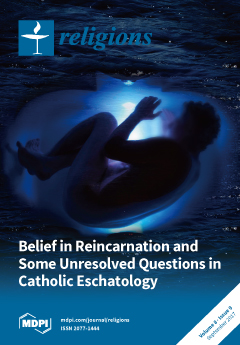Twice in the Hebrew Bible—Exodus 17:14–16 and Deuteronomy 25: 17–19—the ancient Israelites were commanded to “blot out” the memory of Amalek, their enemy for all time (as God intended to do as well). Yet, because these texts are a part of Jewish (and
[...] Read more.
Twice in the Hebrew Bible—Exodus 17:14–16 and Deuteronomy 25: 17–19—the ancient Israelites were commanded to “blot out” the memory of Amalek, their enemy for all time (as God intended to do as well). Yet, because these texts are a part of Jewish (and Christian) religious traditions, annually these passages are read in the synagogue on the appropriate Sabbath occasions in the annual reading cycle, and linked to the Festival of Purim that is based on the Book of Esther. Over the course of Jewish history, Amalek has served as the symbolic enemy of the Jewish people (e.g., Armenians, Nazis, Palestinians); indeed, all of the enemies of the Jews were and are understood to be descendants of the original Amalekites, and thus worthy not only of enmity but of destruction as well (e.g., Haman, Antiochus, Titus, Hadrian, Torquemada, Khmelnitsky, Hitler). Today, many of those in Israel allied with the so-called “settler movement” associated with right-of-center Orthodox Judaism and located among populations primarily of Palestinian Muslims, and Arabs view them as the descendants of Amalek as well, and thus sanction and legitimate their own at times violent actions and behaviors. At its most transparent level, responding to Amalek is a response to antisemitism, both historical and contemporary. This paper examines the history of
Amalekut (“Amalek-ness”) within the Jewish (and Christian) religious tradition, the role of memory and forgetting of those survivors and their descendants traumatized by their enemies, the current manner of branding one’s enemies as descendants of Amalek, and whether, in truth, reconciliation is even possible among enemies of long standing. The implications and consequences for all of the divided groups thus becomes an enormous challenge. Practical suggestions are offered at the end as potential models for both present and future work as well.
Full article





